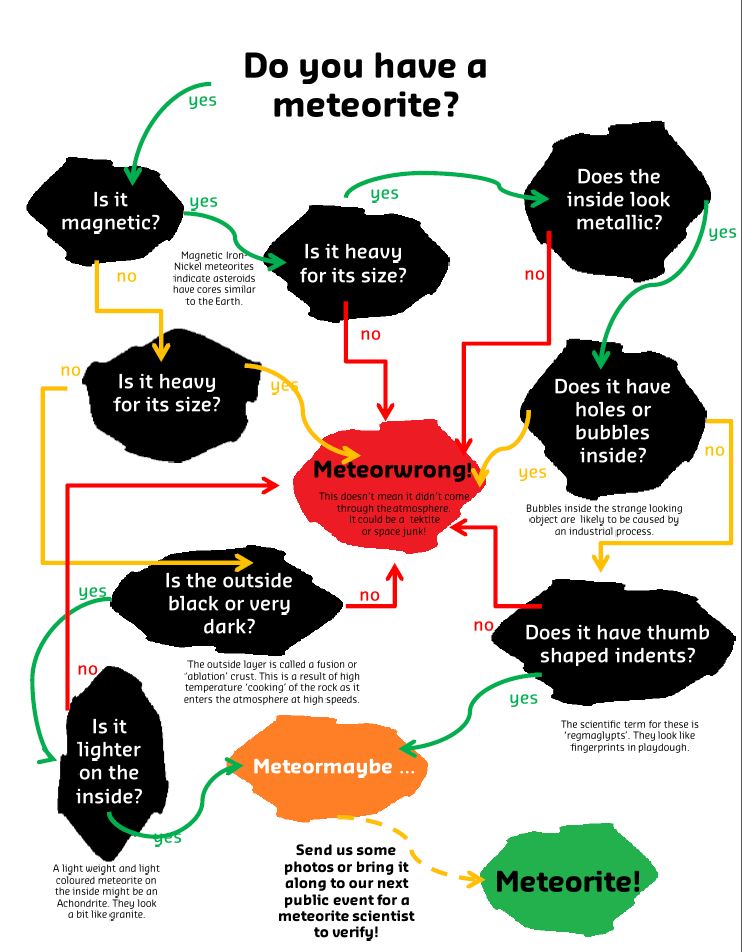How do you know if it’s a meteorite or meteorwrong?
Ever wondered whether that weird looking rock you saw was something special?
Tens of thousands of meteorites fall to Earth every year, so perhaps you actually found a meteorite on that last camping trip. We’ve adapted a flow chart from some planetary scientists* to help you determine if that rock is from space. Perhaps you can test your rock collection, or why not, the whole backyard!
Before you check through the flow chart, what kinds of properties do you think a meteorite would have?
They’re rocks that have traveled very fast (up to 60 km/s) through the atmosphere, spinning and burning all the while. What would the outside look like?
What’s a rock in space made of? Mostly the same things rocks on Earth are made of actually, except there are less volcanoes, tectonic plates, running water and weather on asteroids and smaller bodies. Meteorite are old. Some have not changed since the beginning of the solar system.
When you determine your meteorites, meteorwrongs or meteormaybes, take a picture and send them in to us at fireballs@curtin.edu.au or use the social media hashtags: #meteorite, #meteormaybe or #meteorwrong!
Open the pdf to print: Do you have a meteorite? Flowchart
*Randy L. Korotex put together this Meteorite or Meteorwrong Self-Test Check-List, based on Is There an ET In Your Backyard?, presented to the 2010 Meteoritical Society Meeting by Deborah Guedes and her colleagues.
And there’s plenty of meteorite identification sites out there, here’s a few:
University of Alberta Astromaterials Discipline Working Group
A photo gallery of meteorwrongs (Washington University in St Louis)
Centre for Meteorite Studies (Arizona State University)
Smithsonian division of Meteorites (National Museum of Natural History)
Have I found a meteorite? (Harvard University)
Meteorites Australia
How do you know if it’s a meteorite?
Meteorite.org

